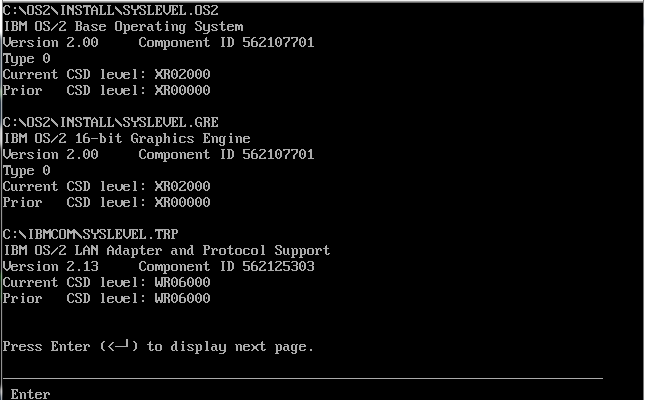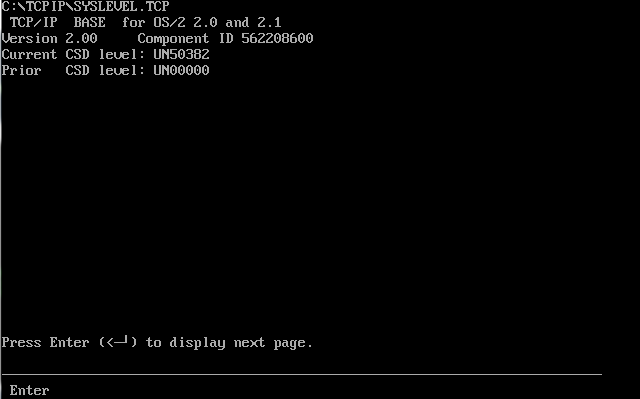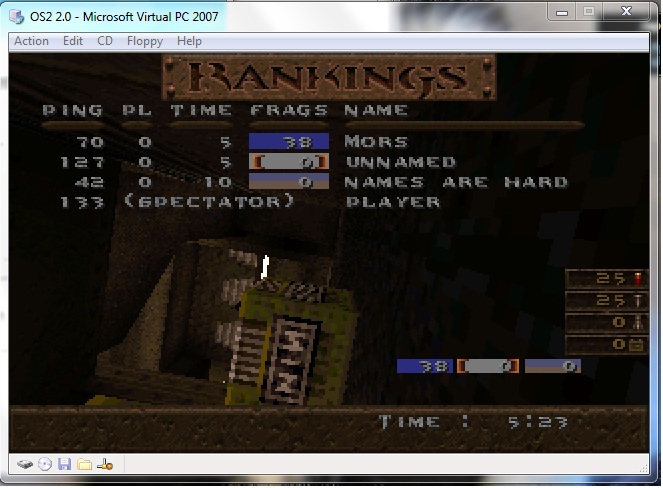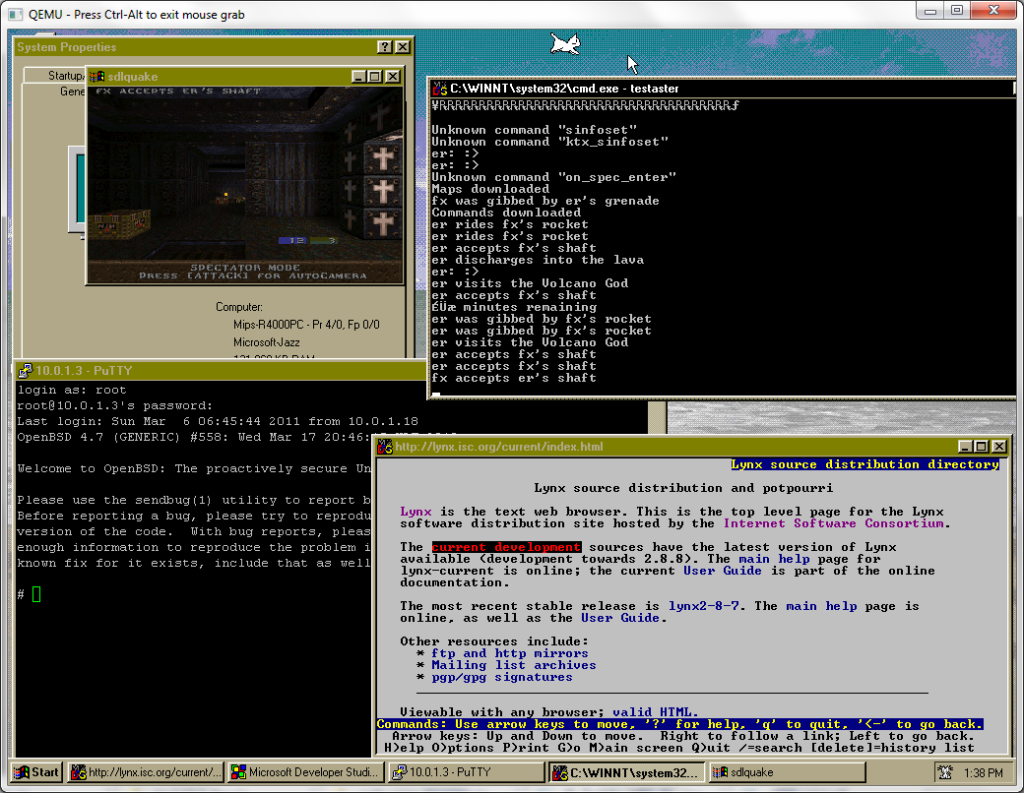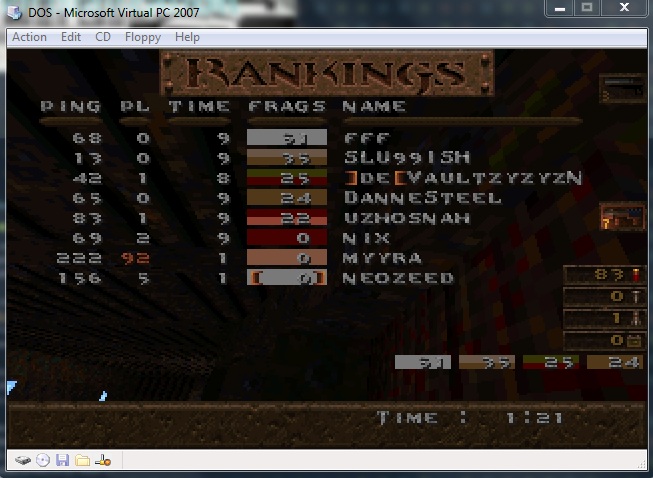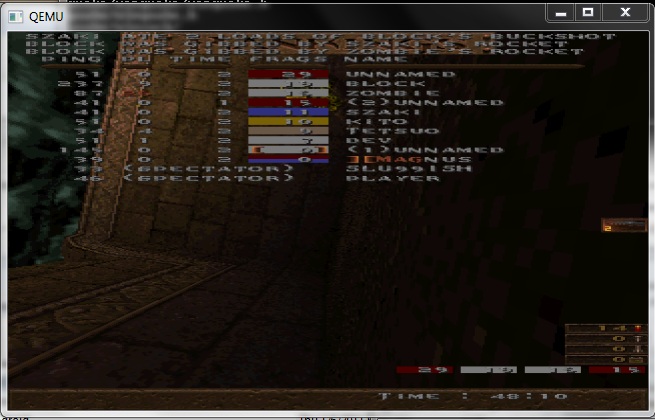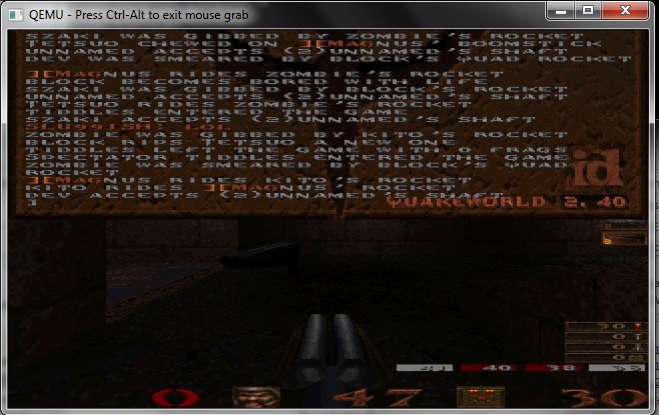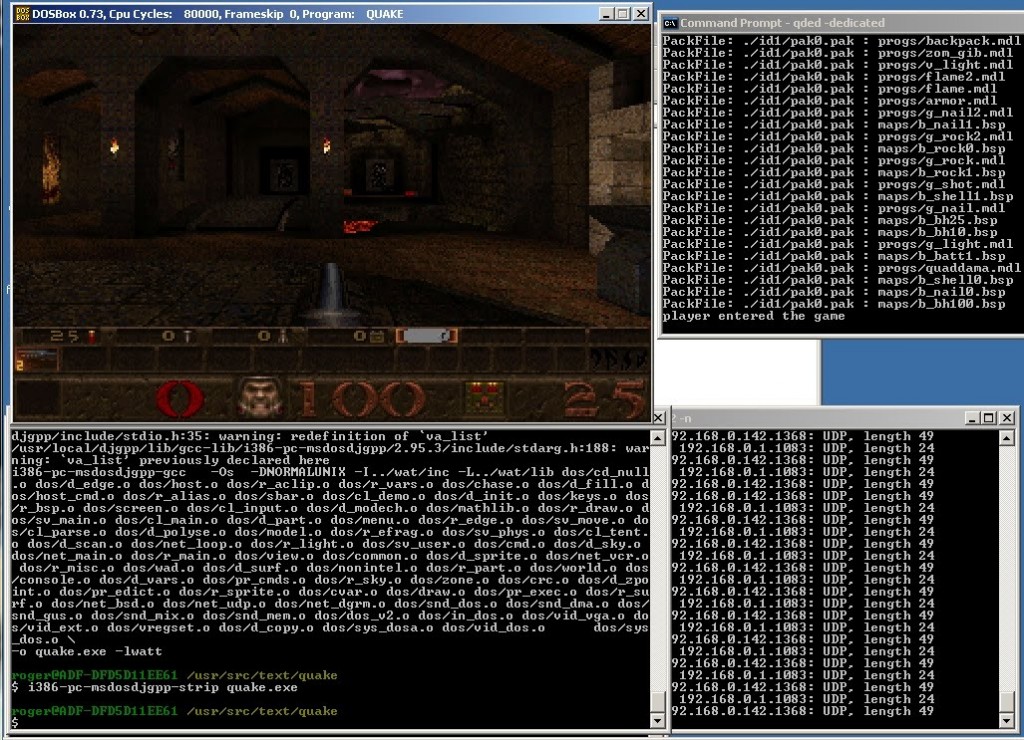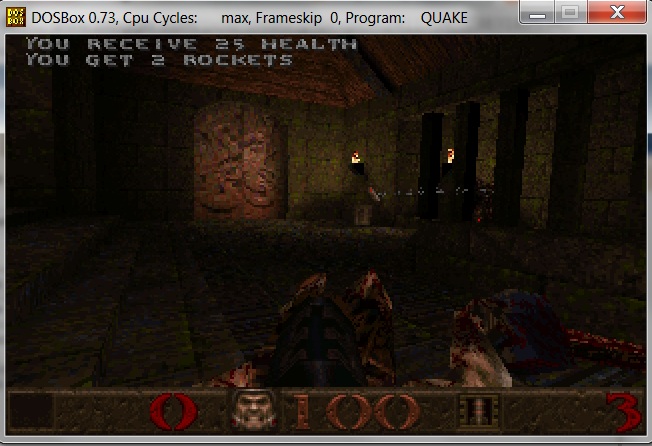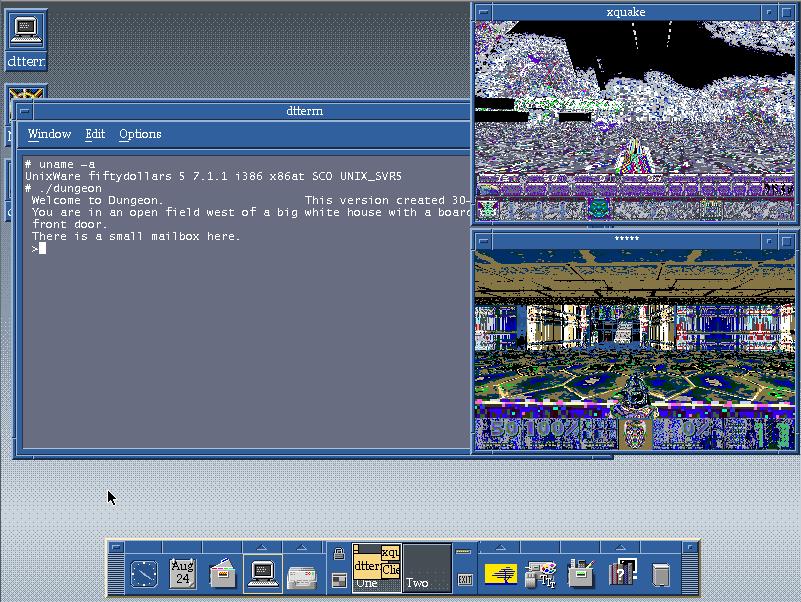Yeah, I guess I just couldn’t salvage this thing… Sometimes when you stand on the shoulders of giants you fall off.
So what had started as a seemingly simple thing turned into a nightmare.. I took the source to my MS-DOS port of Quakeworld, and decided to build it under OS/2. And to be crazy about it, I thought it’d be awesome to get it to work under OS/2 2.0 .
Which means no sound, locked to 320×200 256 colours, full screen only, since the VGA driver won’t do anything but. Years ago on ebay I managed to score IBM TCP/IP for OS/2 2.0 & 2.1, with the LAN support!
So as you can see from my syslevel’s I’m running a pretty bare machine, even the graphics subsystem is still 16bit!
Well the good news, is that with EMX and a HPFS disk, I was able to quickly get the null version running. With a minor amount of work, I had TCP/IP connectivity and things were going well. I had ripped apart a video demo, and got the display up, although it was ungodly slow.. Until I found out that when you are full screen you can request access to the physical video memory, under OS/2 so that sped things up a great deal!
Then all that really needed to be done was get the keyboard working.
And here is where I slipped up.
OS/2 is weird for interactive programs that want to know key states. It seems the best and most common way to do this was to setup a ‘monitor’ for the keyboard device, and try to read the stream as keys are pressed. Sadly idiots that slamm the keyboard, or gamers that hold down an arrow key for a minute lock the thing, and the key then is ‘jammed’ down until you hit it again for the release.
I’m pretty sure that I did it wrong, so I borrowed code from a more ‘advanced’ OS/2 port and it did the same thing. Maybe it’s OS/2 2.0? I don’t know, I did service pack it and update and still the same result.
I really didn’t want to spend that much time on it…..
I feel hesitant to release a binary as you will get killed, and I haven’t even tried the mouse yet, but I suspect it’ll still suck.
So for anyone that cares, here is the source… misspellings and all.

